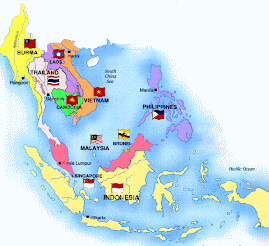"Abstract
Application of biochar alters availability of nutrients and acidic cations in soils which in turn could affect growth of plant to different degrees. Effect of rubber wood biochar amendment on the growth and nutritional status of Hevea nursery plants was determined in this study. Biochar were applied at 1% and 2% (w/w) with and without the recommended rates of N and Mg liquid fertilizers (LF). Two control treatments with 0% biochar but with and without recommended levels of all N, P, K, and Mg LF were also included. Application of biochar alone has a significant positive effect on above ground dry matter accumulation of the rootstock seedling (81% over the absolute control) while no effect on the scion growth. Growth of plants in LF added treatments were much higher. Combining 2% biochar with N and Mg significantly increased the above ground dry matter accumulation over N-P-K-Mg only treatment in both rootstock seedling (29%) and the scion (61%). Biochar only application did not affect the N and P and decreased K and Ca concentrations in leaves. When combined with N and Mg fertilizers however, biochar significantly increased total N, P, Mg and Ca uptake. Biochar only application (2%) significantly decreased the leaf Mn concentrations in the seedling probably due to decrease in Mn availability as a result of increase in soil pH. The increase in soil pH due to biochar addition decreased with time close to original values in soils that received LF, possibly due to sulfate of ammonia. We concluded that application of rubber wood biochar (upto 2% w/w) could improve the growth of Hevea plants with the use of only N and Mg fertilizers under nursery conditions tested in this experiment."
http://www.springerplus.com/content/pdf/2193-1801-1-84.pdf
Randombage Saman Dharmakeerthi 1*
* Corresponding author
Email: dharmakeerthirs@gmail.com
Jayalath Arachchige Sarath Chandrasiri 1
Email: vishanirri@yahoo.com
Vishani Udayanga Edirimanne 1
Email: sarathcjrri@gmail.com
1 Rubber Research Institute of Sri Lanka, Dartonfield, Agalawatta 12200, Sri Lanka
I am not qualified to comment technically on the study but I do wonder about the following...
- my understanding is that LF is plant available, circumventing more 'natural' nutrient pathways. One of the claims made about about biochar is that it will support a shift back to more organic farming practices (nutrient availability from soil flora?). So does adding biochar into existing LF scenarios either complicate or limit the potential study opportunities?
- I guess a practical answer to this is that LF is an industry baseline practice and any modification to this can only be implimented gradually. Biochar needs to 'fit' around existing systems until plantation-wide permaculture practices can be economically and practically demonstrated.



 "
"




